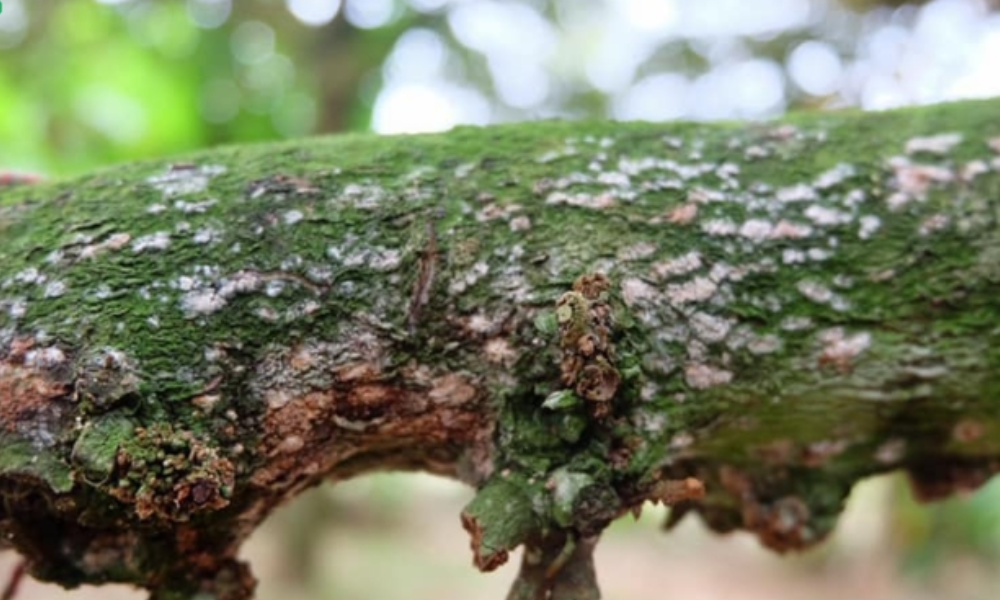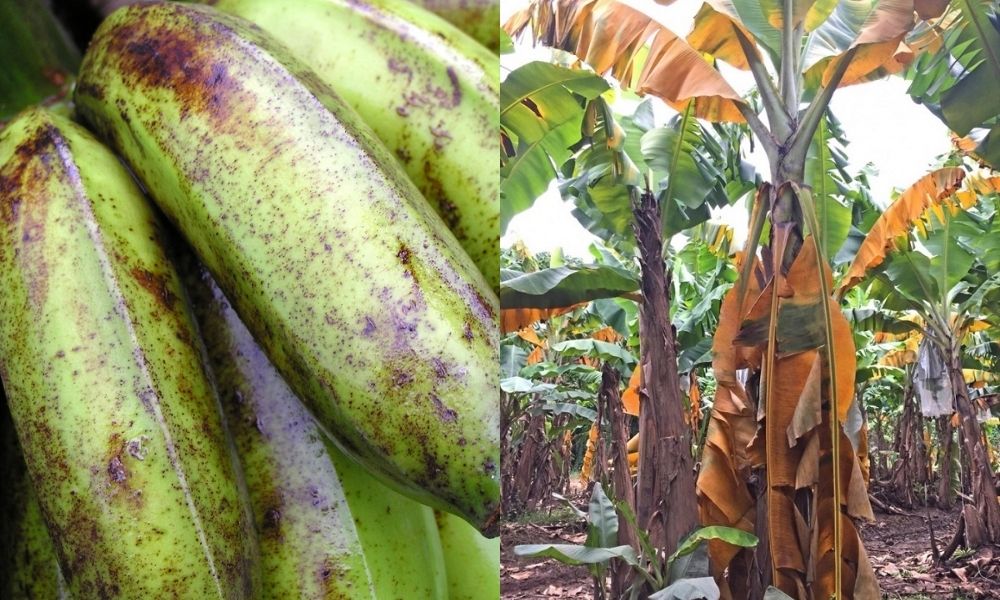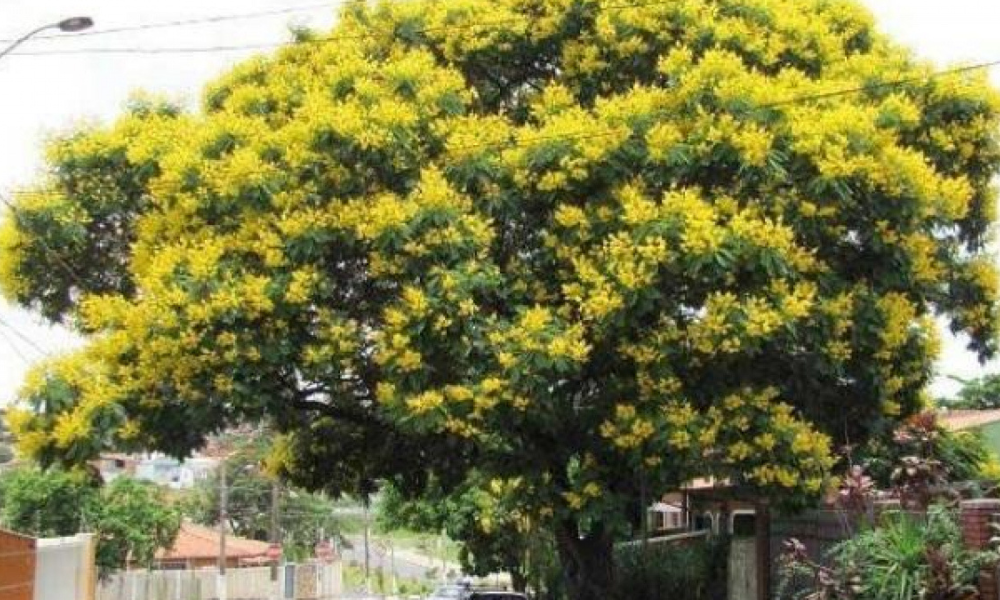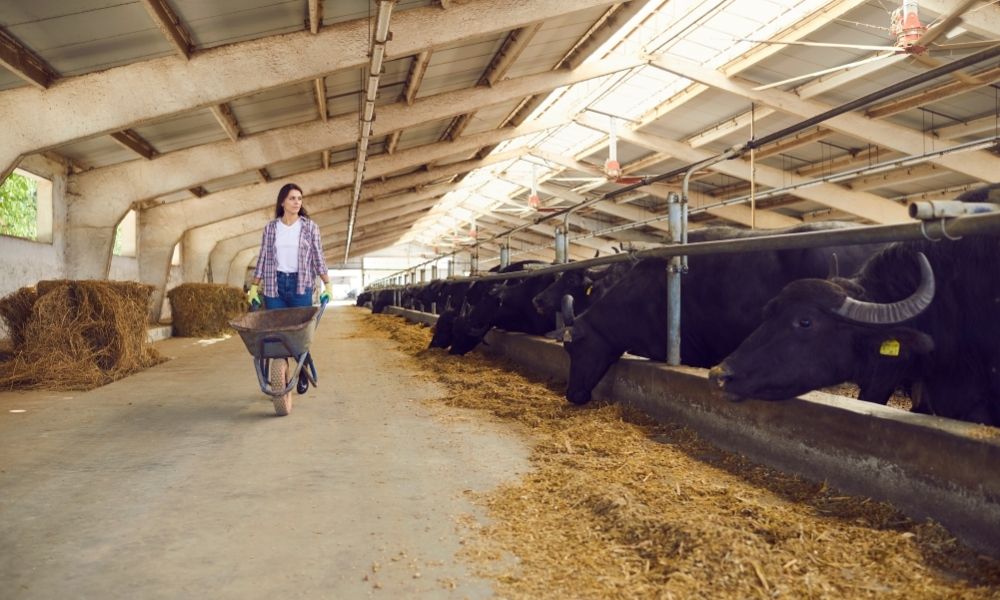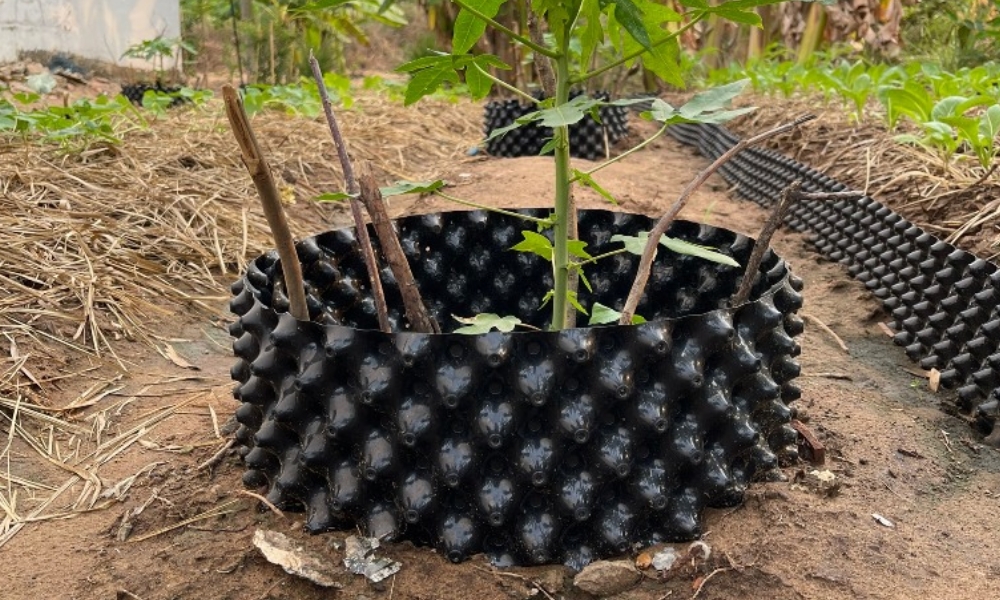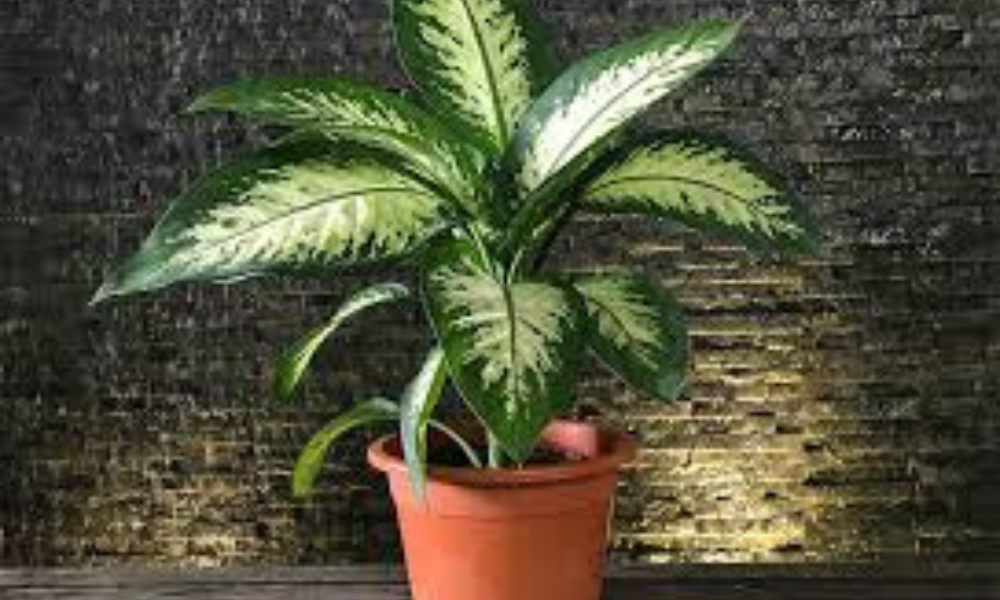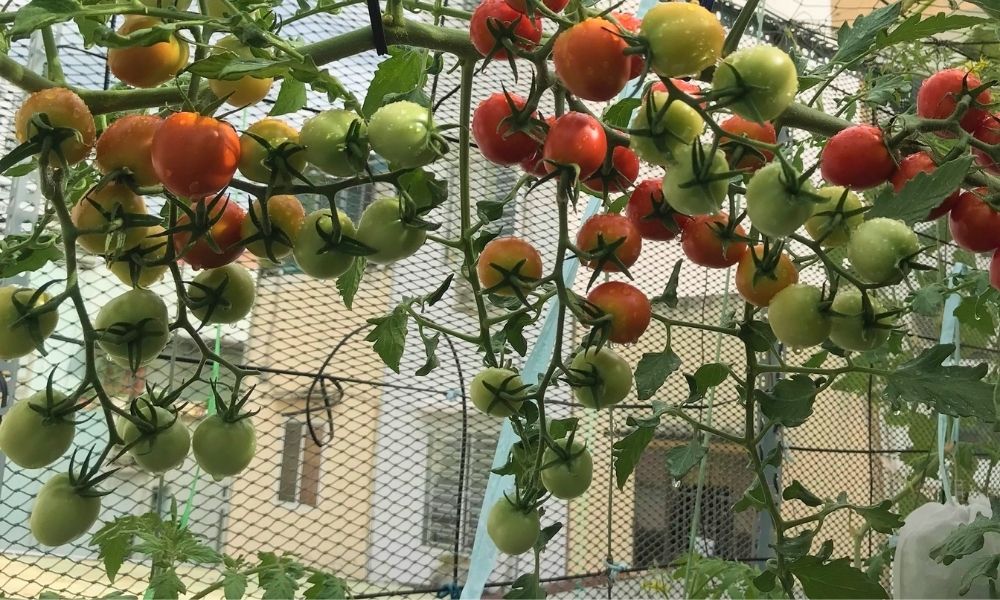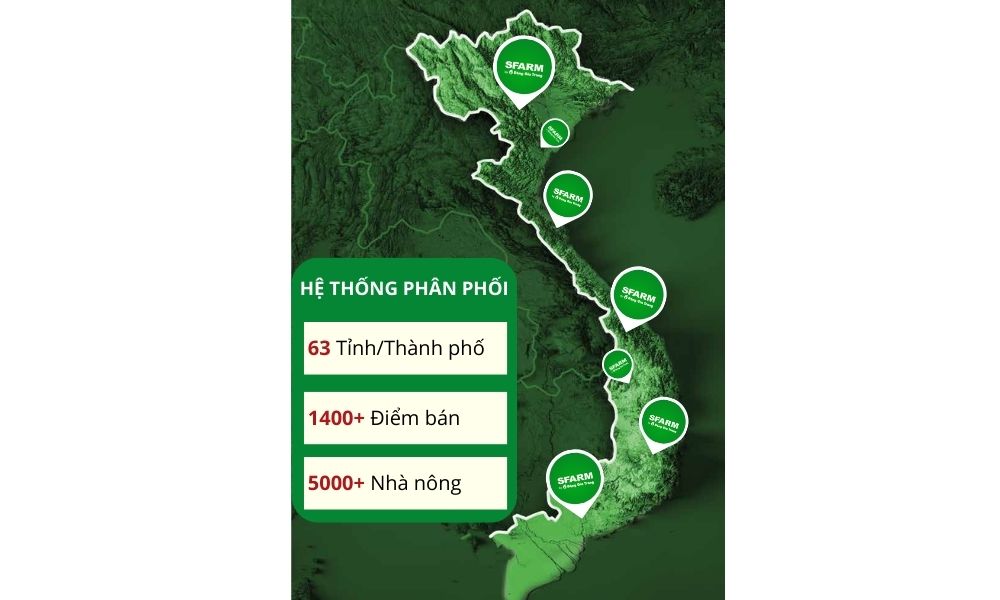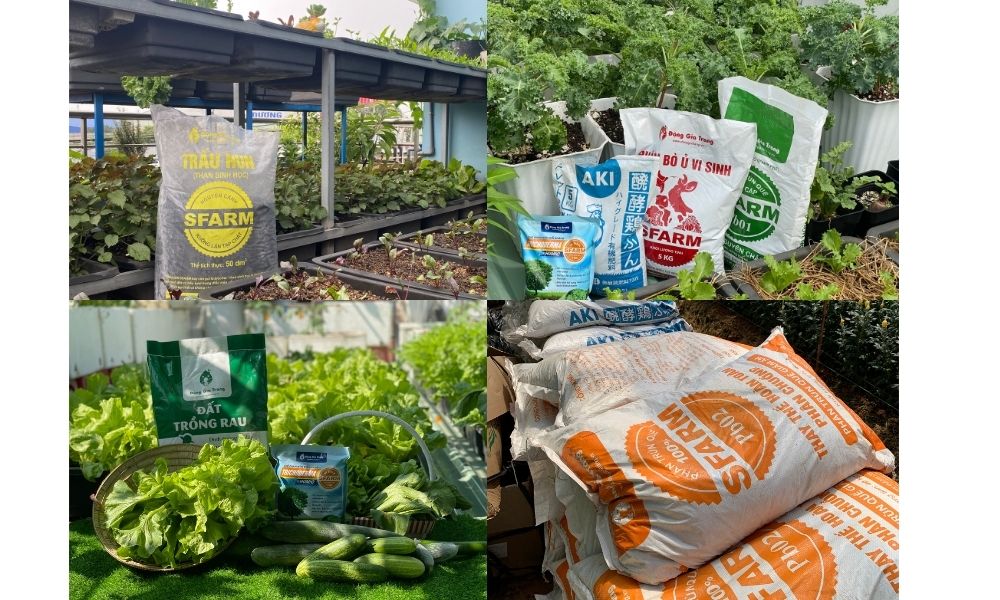Cách trồng ớt chuông tại nhà cho trái chuẩn nhà vườn
Bell peppers are fruits that contain many nutrients so it is increasingly popular. Bell peppers not only for fruit to prepare dishes but also work as decorative bonsai. Growing bell peppers is not difficult but how to make the wrong fruit and fruit quality? Read the article of Dang Gia Trang To learn how to grow bell peppers at home for standard gardeners.
1/ Introducing bell peppers
Bell peppers originated from Mexican countries, northern South America and Central America. But with a delicious taste and fancy beauty, bell peppers have gradually spread and popular around the world.
Bell peppers are not as spicy as other chili varieties, but they have a sweet aroma, so they also have a sweet chili.
1.1 Characteristics of living
Bell peppers often grow in dust, capable of growing well all year round. The fruit is quite large in size, when the fruit harvest is about 5 – 8cm in diameter. Fancy shape, looks like a bell.
The most common is bell peppers with blue, red, yellow and orange. More rare, it may be dark purple, gray, brown, white, … depending on the variety. Green bell peppers are less sweet, slightly bitter and less nutritious than gold and orange. Red bell peppers are the sweetest. However, the taste of bell peppers depends on the conditions of planting and storage after harvest.
Bell peppers are grown mainly in the tropical, temperate and cold regions with the temperature of 20 – 30 degrees C. In Vietnam, bell peppers are grown in Da Lat, so people are also known as Dalat bell peppers.
1.2 Uses
Bell peppers are favored not only by the delicious taste or fancy appearance, but they also have many other uses.
– Rich in nutritional value:
This is a fruit that contains quite a lot of nutritional ingredients, so the housewives choose to cook. According to many studies, bell peppers are rich in vitamins A, C, E, B6 and other essential nutrients.
– Beauty effect:
If you eat bell peppers regularly, your skin will improve, become smoother and more shiny. Especially, although rich in nutrients, bell peppers contain very little energy, so they have a very effective weight loss effect.
– Medical effects:
Thanks to the ingredients contained in the fruit, bell peppers have many uses in medicine. They can secret the digestive fluid should help prevent digestive disorders. Not only that, it is believed that bell peppers have the ability to prevent some types of cancer, especially prostate cancer in men.
– Decorating outdoor scenes:
Besides the good uses for health, bell peppers are also used as a decorative bonsai for the home space. With the tree shape not too large, the fruit has a beautiful color and a fancy shape, many people have planted bell peppers at home to have a pot of plants that can be eaten and can beautify the space.
1.3 Planting season
As a plant that can grow all year round, in Vietnam, usually divided into two main crops to grow bell peppers, it is winter -spring or summer -autumn. If you want high yield, planted in the winter -spring crop, and planted in seasonal crops in summer -autumn, although the yield is not high, the bell pepper price is very expensive.
2/ How to grow bell peppers
2.1 Bell pepper planting location
You can grow bell peppers with only a small empty garden, or take advantage of the trays, pots, foam containers with drainage holes to plant. For bell peppers to develop smoothly, it is necessary to plant them in places with warm, sunny temperatures. Note that bell peppers should be protected from strong winds, so it can make the roof, the pile is fixed.
2.2 Prepare pots for planting pots
When choosing pots, pay attention to the size, material and drainage of the pot. A pot has about 3-4 drainage holes at the bottom, making sure the tree is not flooded. Do not use black plastic pots, as it will increase the temperature a lot if in the hot summer, causing damage to the roots.
When planting or if planting small seedlings, it can be used with a diameter of about 5 – 10cm. But when the tree is mature, you need to choose pots with a diameter of about 30 – 35cm and 25 – 30cm deep. With such a large pot, you can grow a large or 2-3 small trees. For how to grow bell peppers properly, you should prepare multiple pots from small to large size.
2.3 Choose bell pepper planting varieties
In planting techniques, the process of selecting varieties is very important, affecting the productivity of the tree. When learning about tree varieties, pay attention to the characteristics of shape, color, quality of fruit, output and ability to withstand pests.
In Vietnam, there is a popularity of red bell peppers and yellow bell peppers. This variety has a high nutritional value, the fruit often has a sweet and bitter sweetness.
About how to grow bell peppers, it is usually grown with seeds or seedlings. After eating, you can take the seeds not worms or flattening, dried as the seed to plant. However, it is advisable to buy seeds from agricultural stores because they have been treated with pathogens and quality assurance.
In addition, bell pepper planting can be healthy seedlings, resistant to pests and diseases. The seedlings must be from 35 – 40 days old with a height of about 16 – 20cm, with the root system that has grown well and at least 4-6 leaves.
2.4 Choose bell pepper soil
Bell peppers grow and develop well in fertile, porous, breathable soil conditions. So the soil may be meat soil, alluvial soil along the river or sandy soil.
If it is natural soil, you need to handle before use. Make sure there are no weeds and water the soil. Then fertilize NPK/ manure decomposed and a layer of lime to provide nutrients and eliminate soil pathogens. You only need to mix in the ratio: 5 parts of the ground + 3 parts of the porous substrate (coconut/ rice husk/ sawdust …) + 2 parts of fertilizer (manure/ npk fertilizer). Then, spread a layer of lime on the surface, mix well with soil and water to dissolve lime.
Besides, you need to prepare more small soil to sow seeds. Mix clean ground soil crushed with sawdust, rice husk, coconut fiber to create ventilation.
In the absence of land, you only need to buy specialized clean land at agricultural stores. You will learn and choose clean soil with the ingredients and suitable for each type of tree you want to plant. For example, sfarm organic clean soil ensures quality and is suitable for many crops that are trusted.
2.5 soaking, nursery seeds
The process of soaking, nursing and growing bell peppers often makes many people confused, so please refer to the instructions on how to grow bell peppers later.
After the seed is prepared, then soak in warm water about 50 degrees Celsius for fangs. After about 12 hours, continue to sow seeds into the prepared soil. Note to sow about 5mm deep.
Place the seeds in a warm position, temperature above 15 degrees Celsius daily moisture until the seeds germinate. If the warmth and moisture will be maintained, the seeds will germinate after sowing about 1-3 weeks.
2.6 Proceed to plant seedlings to large pots
About 10 – 14 days after the seeds germinate, the seedlings will see about 2 real leaves. At this time, continue to maintain the temperature to stiffen the tree before planting outdoors.
Since germinating after 1 month, seedlings have grown, growing a lot of real leaves and a height of about 20cm. This is the right time to transplant plants in small soil pots, bring them into cool areas, keep moisture daily so that the tree can quickly take root.
As the tree is growing, gradually switching them to larger pots that have been prepared in advance. For example, gradually shift the seedlings from a pot with a diameter of about 5cm to a pot about 10cm, then 15cm.
If the pot is observed that the pot has been filled with roots, then the bell peppers are ready to be transferred to a fixed pot, with a diameter of about 30 – 35cm in diameter, from 25 – 30cm deep.
Many people wonder why not planting bell peppers in large pots without transplanting. Such bell peppers are not wrong, but the later plants will have a lower yield.
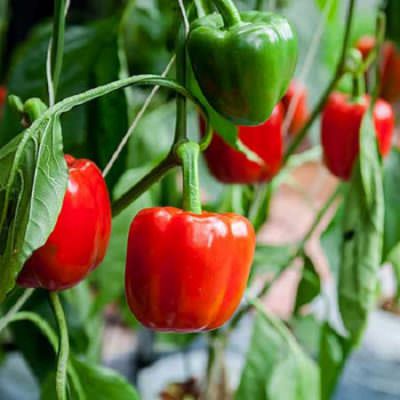
How to grow bell peppers at home
3/ How to take care of bell peppers
3.1 Water regime
Bell peppers are plants that need quite a lot of water, so they always have to keep the soil moist. After planting, water immediately, while maintaining daily irrigation water. Watering regularly twice a day in the early morning and the cool afternoon is the best.
When irrigated, pay attention if the new dry soil is watered, because if the pot is flooded for a long time, the stagnant water will facilitate the generation of pathogens. Avoid wet leaves when watering is also avoiding plants from fungal infection.
3.2 Weeds and trimming trees
In the process of taking care of bell peppers, weeding for plants is essential. Regularly clean weeds to help the soil clean and ventilate, focus on nourishing plants.
At the same time, it is necessary to trim the branches, leaving only 3-4 branches per tree, so that the bell peppers focus on developing the main branches. In the early stages, the tree is about 15 – 20cm high, so pruning them to branch more. After about 20 days after transplanting, pruning can be performed, each pruning weekly.
With old leaves, withered leaves must also be trimmed, leaving only green leaves. If the branches and leaves are too much or infected, they must be trimmed and removed. If the flower appears early, it must be cut so as not to affect the productivity later.
In addition, if the tree has too many fruits or fruits with signs of pests and diseases, it is also necessary to eliminate to ensure the best quality. Pruning bell peppers should only be done at the time of the fruit size. Proceed to check and regularly trim the fruit to increase the size and quality of bell peppers when harvested.
3.3 How to fertilize plants
Bell peppers need a lot of nutrients, so you need to pay attention to the tree. The amount of fertilizer depends on the development of plants and the nutrient level of the soil. Each fertilizer is combined with cultivation and weeding, and should pay attention to the distance between fertilizers.
– After transplanting about 2 weeks, it is possible to apply the first batch of organic fertilizer, earthworm feces, cow feces, NPK fertilizers, …
– The second batch of fertilization after about 12-15 days from the first batch.
– The third phase after the second phase of 25 days – 1 month, usually when bell peppers are in the first harvest period. At this time, fertilizing and cultivating the root for loose soil, so that the next trees will produce many fruits.
3.4 Pest and disease management
If you want to take care of bell peppers effectively, high productivity, quality fruit, you need to regularly check the signs of pests and diseases to promptly eradicate. Some types of pests and diseases that bell peppers encounter such as:
– White spider: Causes curly, curly tops
– White flies: stimulate the growth of mold
– Meaighter: usually appear on tops or leaves at the end of April – early May
– Mai dew disease: arising from the leaf edges, then spreading quickly to destroy all parts of the tree.
– Anthracnosis: Causes mass rotten fruit
Some notes on how to prevent pests and diseases for bell peppers:
– The soil has been treated with pathogens before sowing, planting seedlings.
– Control external conditions (temperature, light, …), watering mode, appropriate amount of fertilizer.
– Regularly clean the surrounding weeds.
– If the pests are not much harmful, it is possible to destroy it manually by catching deep in the morning or in the afternoon.
– Early eliminate infected parts, avoid affecting other parts.
– Use plant protection drugs in the right time, at the right time.
4/ Bell pepper harvest
After a whole process of planting and tending, surely everyone expects the time to harvest bell peppers. More than 2 months after planting, the tree will start flowering and fruiting. Continue to take care of until the tree is 3 months old, this is also the time when the first bell peppers are harvested.
You can harvest bell peppers when they are still green but the size is standard, or when the ripe fruit turns red, yellow or orange. The fruits with glossy shells, pressing on the stiffness and hearing the “Pop” sound can be harvested. Note, if the fruit is old or too young, they are not delicious, the old fruit is poor quality and the fruit is thin, not sweet.
The first year bell peppers will produce many flowers, so it can be harvested many times. When harvesting, you use scissors to cut the stem, avoid damaging flowers and other young fruits.
So, Dang Gia Trang shared all information about characteristics, uses, how to grow bell peppers and take care of the home for gardeners. Hope you can apply and plant fresh green bell peppers for the wrong fruit and beautiful fruits, quality for your family. For further information please contact Hotline 0902.652.099 okay!
Sfarm.vn
*See more
Chuyên mục: Kiến thức làm vườn
Nguồn: lol.edu.vn

 0934.19.6789
0934.19.6789
